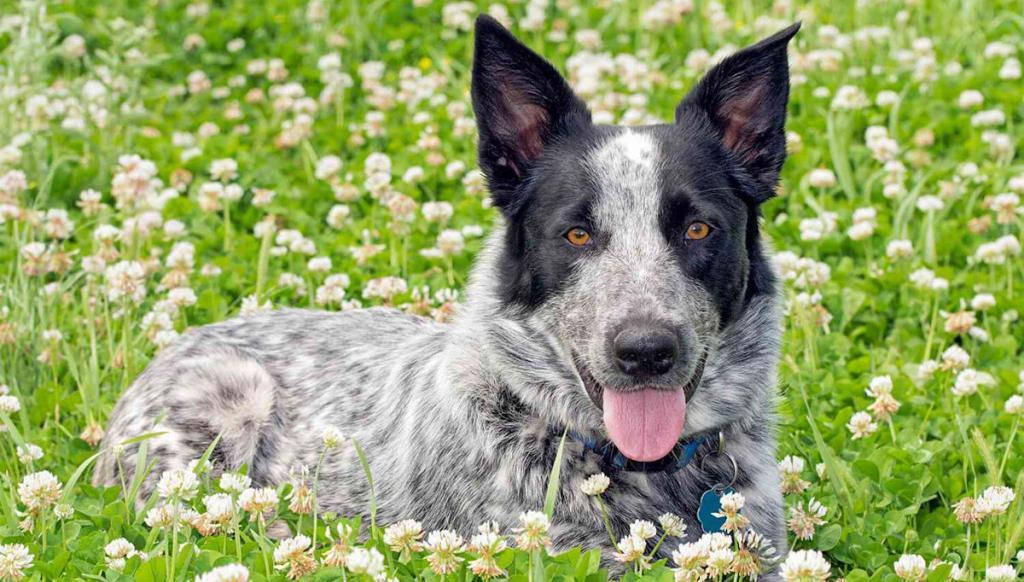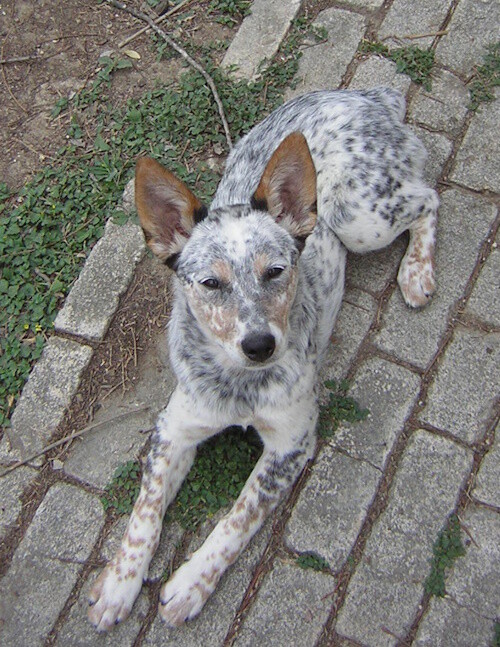Just as you’re considering adding a new four-legged member to your family, you might stumble upon the Texas Heeler, a breed known for its intelligence and vigor. You’ve likely heard of the Australian Cattle Dog, admired for its herding prowess, and the Australian Shepherd celebrated for its companionship and versatility.
The Texas Heeler inherits the best traits from both parents, making them exceptional companions for active individuals or families. As you navigate the world of mixed-breed dogs, understanding their unique needs is crucial.
With their robust energy and sharp intellect, Texas Heelers are more than just pets; they’re partners requiring a dedicated training and exercise approach. If you’re curious about how this dynamic breed could fit into your lifestyle, stay tuned to uncover the intricacies of their temperament, care, and the bond they can form with the right owner.
- Noise Level
- Energy
- Sociability
- Trainability
- Care
- Health
Overall
Summary
The Texas Heeler is a moderately energetic and sociable breed that is relatively easy to train. They require moderate care and generally have good health.
Texas Heeler: Traits, Temperament, and Care Guide
The Texas Heeler exhibits a blend of traits, such as high intelligence and unwavering loyalty, and demands an owner who provides consistent training and ample physical activity to ensure its well-being.
As an intelligent dog, they’re quick learners but may display headstrong tendencies requiring firm, early training.
Their energetic dog nature calls for regular exercise and mental stimulation to avert potential boredom and subsequent behavioral issues.
Your Texas Heeler’s temperament is bold and playful; robust socialization is crucial.
Be mindful of health issues like hip dysplasia and ensure a care guide that includes biologically appropriate nutrition and vet checkups.
A harmonious living environment and daily physical activity are vital, making them adaptable even to apartment living with adequate exercise.
Exploring the Characteristics of the Texas Heeler
Building on the foundational understanding of the Texas Heeler’s temperament and care requirements, let’s examine the breed’s physical and behavioral characteristics to appreciate what makes it a distinctive working group member. This hybrid breed, a cross between the Australian Cattle Dog and Australian Shepherd breeds, inherits traits of both parent breeds, resulting in an energetic mixed-breed dog with strong herding instincts.
| Trait | Description | Significance |
|---|---|---|
| Size | 17-22 inches tall, 25-50 pounds | Suitable for various homes |
| Coat | Short-medium, various colors | Requires minimal grooming |
| Intelligence | High | Trainable, needs mental stimulation |
| Lifespan | 12-15 years | Long-term commitment needed |
Their natural herding instincts may manifest in herding behavior, which requires discipline to manage. Due to their intelligence and loyalty, Texas Heelers are highly trainable and become deeply attached to their families.
Texas Heeler: A Comprehensive Profile and Guide
As you explore the Texas Heeler’s profile, consider the breed’s physical attributes, such as its size and coat variations, which affect aesthetics and grooming needs.
Acknowledge their cognitive capabilities and behavioral traits, recognizing the necessity for consistent mental and physical engagement.
Assess potential health concerns and the associated care costs, which prospective owners must understand before committing to this energetic and devoted breed.
Everything You Need to Know
Embarking on the journey to understand the Texas Heeler requires an examination of their physical attributes, behavioral tendencies, and health considerations to ensure a well-informed adoption or purchase decision. This crossbreed, combining traits of the Australian Cattle Dog and a herder like the Border Collie or Australian Shepherd, results in an active and intelligent companion.
To make your understanding clearer:
- Size and Appearance: The Texas Heeler stands 17-22 inches tall and weighs 25-50 pounds. Its coat can be black, blue merle, or blue ticked.
- Behavior and Training: These dogs are headstrong yet trainable, making early, consistent training vital for integrating them as the perfect family dog.
- Health and Exercise: They’re prone to certain health problems such as hip dysplasia, requiring regular exercise and veterinary care to stay fit and healthy.

Discovering the Temperament
Most Texas Heelers exhibit a temperament that’s intelligent and loyal, making them highly responsive to training and suitable for roles such as herding or companionship. Texas Heelers are highly trainable and naturally inclined to mental and physical challenges. These herding dogs are known for their eagerness to learn new tasks, which means they thrive with consistent training and socialization. Heelers are extremely active, requiring regular exercise to maintain their well-being.
Moreover, Heelers love being part of the action, making them a perfect family pet for active households. However, their herding behaviors, including a tendency to nip, should be managed through training. With the right environment, Texas Heelers can channel their intelligence and loyalty into becoming affectionate and protective companions.
Texas Heeler: Is It a Good Fit for Families?
As you consider a Texas Heeler for your family, evaluating their compatibility with your household’s dynamics is crucial. These dogs are well-suited for active families due to their intelligence and high energy levels. Yet, they require consistent training and socialization to manage their herding instincts around children.
Prospective owners should ensure they have the time and resources to meet the breed’s physical exercise and mental engagement needs to foster a harmonious relationship.
Assessing Texas Heeler’s Compatibility with Families and Kids
When considering a Texas Heeler as a family pet, it’s essential to evaluate their high intelligence and energy levels alongside the family’s ability to provide adequate mental stimulation and physical exercise. Here’s what you need to know:
- Family Dynamics: Texas Heelers are excellent companions for active families engaging in regular outdoor activities. They can fit well in families with older kids who understand the need for positive reinforcement during training.
- Children’s Age: With small children, caution is advised. Early socialization and training help mitigate their instinctual herding and home protection behaviors, which could overwhelm younger kids.
- Routine Care: Texas Heelers require regular exercise and mental challenges to prevent boredom and destructive behavior, ensuring a harmonious household.
Analyzing these factors will help determine if a Texas Heeler aligns with your family’s lifestyle.
Texas Heeler Flexibility
Texas Heelers’ adaptability to diverse living conditions, from spacious ranches to compact apartments, hinges on their access to sufficient physical and cognitive engagement. As an Australian cattle dog mix, the Texas Heeler is active and intelligent, requiring training methods that challenge its mind and body. Because heelers are highly intelligent, this breed responds very well to training, making them perfect for a farm setting or as companions for active individuals. Their robust work ethic and herding instincts are great for herding tasks and competitive agility.
However, Texas Heelers and blue heelers alike may become prone to certain behavioral issues without the right outlets for their energy. Ensuring regular exercise and mental stimulation is key to their well-being and flexibility in adapting to their living environment.
Herding Instincts Training
As you train your Texas Heeler, it’s crucial to start herding instinct training early, utilizing positive reinforcement to shape their innate abilities.
Structured activities like herding trials and agility training will provide necessary outlets for their instincts while reinforcing discipline through obedience training.
Seeking professional guidance or enrolling in specialized classes can significantly enhance their herding proficiency.
Effective Training Strategies
How can you harness a Texas heeler’s natural herding instincts for positive outcomes? Effective training strategies are essential, beginning with early intervention to direct these instincts constructively. A Texas Heeler generally responds well to training due to its heritage from the highly active and intelligent Australian cattle dog and the Australian shepherd. Obedience training is key; they learn new commands easily with the right motivation.
Here’s a concise table to help you visualize the training approach:
| Strategy | Purpose | Method |
|---|---|---|
| Positive Reinforcement | Encourage desired behaviors | Treats, praise |
| Mental Stimulation | Satisfy natural instincts | Herding games, activities |
| Clear Boundaries | Manage herding tendencies | Specific commands |
| Early Training | Channel instincts constructively | Start training as a puppy |
| Professional Guidance | Address training challenges | Seek a trainer if necessary |
Exercise and Grooming Needs
Texas Heelers need substantial daily exercise and engagement in task-oriented activities to meet their high energy requirements and prevent potential behavioral challenges. As descendants of herding breeds, these dogs need enough exercise to satisfy their innate drive to work and move. Without this, they may develop undesirable behaviors.
Your Texas Heeler’s grooming routine should address their double coat, which moderates shedding with regular brushing. In addition, you should brush their teeth to prevent dental issues and trim their nails to avoid discomfort and mobility problems. Heelers need regular veterinary checkups to ensure their well-being.
As part of a community of Texas Heeler enthusiasts, recognize that these practices contribute to a healthy, well-adjusted companion, reflecting a commitment to responsible dog ownership.

Health Considerations
When considering a Texas Heeler’s health, it’s crucial to recognize the breed’s susceptibility to specific hereditary conditions, including hip dysplasia, deafness, and progressive retinal atrophy.
You must ensure they receive regular veterinary care and a nutritious diet to mitigate these risks and promote longevity.
Common Health Issues and Lifespan
Despite their robust health, Texas Heelers are susceptible to certain hereditary conditions. These conditions include hip dysplasia, deafness, and progressive retinal atrophy, which necessitate vigilant care and regular veterinary screenings. As an owner, you’re part of a community devoted to the well-being of these Australian Cattle Dog mixes. Acknowledging the common health problems they may face is crucial for their care.
You must proactively maintain your health by managing your diet and exercise. A Texas Heeler’s lifespan of around 12 to 15 years hinges on such attention to health alongside genetics. Promptly addressing any signs of hereditary health issues ensures your Texas Heeler can thrive within your pack for as long as possible.
Is Texas Heeler the Right Dog for You?
When deciding whether a Texas Heeler is the right companion for you, assessing your ability to meet the breed’s needs for significant mental stimulation and vigorous daily exercise is crucial. This mixed breed dog is an energetic working dog, a cross between an Australian Cattle Dog and a heeler or blue heeler. They’re intelligent, trained, and eager to please, making them excellent family pets when raised correctly from a young age.
However, they require much attention, including early and consistent training to channel their headstrong nature. You should be prepared for regular grooming alongside managing their moderate shedding. Consider if your lifestyle can accommodate a Texas Heeler’s boldness and activity levels, ensuring they aren’t prone to health issues due to neglect or inactivity.
Conclusion
The Texas Heeler thrives when its sharp mind and vibrant energy are channeled through exercise and mental challenges.
Picture the agility of a gymnast and the understanding of a strategist—that’s your Texas Heeler.
Careful attention to its health and grooming will ensure this loyal companion dances through life beside you.
Assess your lifestyle: if it aligns with the Texas Heeler’s energetic spirit and needs, this breed could be the perfect addition to your family tapestry.
